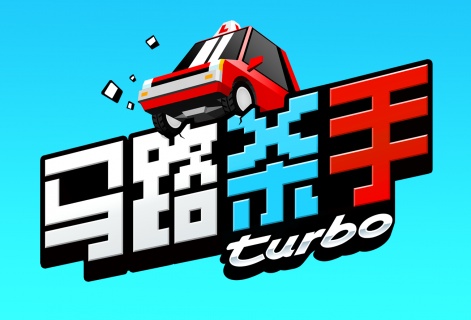A little over a year ago, we went to the Yorkshire city of Sheffield to meet a two-man team of ex-console developers known as Dumpling Design to talk about how its YOLO attitude helped its first game, Dashy Crashy, achieve success.
Now the game has just received a major overhaul, with a whole new monetisation model, new gameplay added for each car and an Android release.
To find out more about why the studio decided to focus its efforts on expanding the game in such a way, we chatted with Travis Ryan about getting Apple's attention and the dreaded "feature creep" that kept bringing the team back.
PocketGamer.biz: Why have you chosen to revamp Dashy Crashy as Dashy Crashy Turbo?
Travis Ryan: Dashy Crashy was Dumpling's first release and a bit 'sink-or-swim' for the studio, so obviously we had a list of areas we wanted to improve upon - critically, in v1 the general engagement of the game and how players unlocked cars was too skill-based.
The data reflected our concerns and we implemented a new "looty road" to make unlocking easier for all players, which took a couple of weeks to develop.
Around this time my son Bruce was pestering us to make the Tank "shoot stuff!", so we tried it, it was super fun!
At Dumpling we adopt a simple approach: if there's no fun in a game, there’s no business to model around it.Travis Ryan
Then we made a car drift, then a UFO fly, but that wasn't enough so we had it abduct cars, and before you know it we were knee-deep with 80 new gameplay mechanics - not counting tons we threw out - and months had flown by. It's pretty much the text book definition of 'feature creep'.
Internally we started to refer to it as 'Dashy Crashy 2' while investigating other platforms such as Android.
But considering our existing player base - who'd invested time and money into v1 - along with how we wanted to develop our games in future, we opted instead to stick with a single title and give each major update its own suffix, maybe continually adding to it in classic Street Fighter fashion.
It has been very difficult to message, as it's not considered a 'new' title per say, it can impact exposure with a platform to some extent - but it is effectively a v2, and we feel updating is the right direction for the game.
What can we expect in the updated version?
The meat of the update is in the added Actions, Bonus Modes or Perks for 80 vehicles, some of which really alter how you play the game - for instance, focusing gameplay on collecting things, shooting things, solving maths problems, busing passengers or playing a fruit machine - the obvious stuff, really!
We've created 25 new Legendary and Secret cars to flesh out the roster and reworked the basic loop of 'stuff to do', adding in extra ways to unlock content outside of the 'looty road' system, such as missions and friend goals, as well as 'medals' that effectively make every car a 'level' with a goal to achieve - all of which feeds into achievements that 'level up' your Driver's License.
We're always listening to player feedback, so we've added a bunch of options and support such as custom music, sound and display options, a pause button (finally!), etc.
Can you explain a bit more about the "rental" advertising model you're implementing?
Players can unlock all of the cars either through play (loots!) or IAP, but they can also choose to watch an Ad to test drive any car for five plays.
It’s a very flexible system with a try-before-you-buy approach. 'Renting' cars seems obvious, but we don't believe it would work with cosmetic only content - there needs to be gameplay value to entice and create value.
Why have you decided to change your monetisation strategy at this point in the game's life?
Version 1's video Interstitials and 'pay-what-you-like' model (to remove) was well received, but there was always that niggling feeling - and the odd review - that had us wondering if there was a way to make the ad experience a bit less intrusive, and instead more of a positive action that players opted in to.
We're still learning, and at the very least these types of experiments provide us with objective data to respond to, so who knows, it's likely to evolve again.
Monetisation is difficult and there's a lot of noise around best practices and so on. At Dumpling we adopt a simple approach: if there's no fun in a game, there’s no business to model around it - so only once we've found the fun, can we then establish its value and how best to propose that to players.
Are you happy with how the game has performed pre-update?
Absolutely! It was an incredible response for our first title, we’re continually blown-away by feedback and support from players!
Can you share any specific information on the performance of the original game, such as your ARPDAU?
Our ARPDAU tracked a touch below the $0.05 average, which was understandable for the systems in place.Travis Ryan
Version 1 hit just over 2.5 million downloads on iOS with an active player-base that stayed surprisingly healthy given the lack of content during its first year.
Broadly speaking revenue split between Rewarded Ads and IAPs hit our exceptions of 2/1.
Our ARPDAU tracked a touch below the $0.05 average, which was understandable for the systems in place, and we've since focused our energies on keeping players entertained and engaged.
Why have you chosen to add tvOS support to the game?
Honestly, it was to get Apple's attention.
But we were surprised how well the game translated directly to the Siri Remote and the big screen - we've exhibited on 20ft projectors and blinded entire rooms with its vibrant tones.
It’s benefited the game as a whole - things like iCloud support for cross-device play and landscape orientation all filtered back to improve the mobile and tablet versions.
If anything, playing the game on TV has enticed us back to console development - we're very keen to do something for Nintendo Switch.
What has been your experience with getting the game released in China? Have you worked with a partner?
The Chinese market is so rapid and volatile; when we launched Dashy Crashy a year ago, meetings with Chinese publishers would end pretty quick once they realised we didn’t have an Android version.
Skip forward a year and it’s the complete opposite; Chinese publishers now seem more focused on iOS due to quality of users and low platform overheads, effectively allowing them to instead focus their efforts on advertising channels.
Version 1 performed okay in China, we managed to capture some buzz and chart well, but it's difficult for a two man team to sustain that level of content and push.
We've partnered with iDreamSky for v2 to give the game longer legs in the region with broader cross-promotion opportunities.
The game's monetisation and systems are largely unchanged, Dumpling are handling all development and we’re working together to create content that appeals to both a local and global audience.

Are there any more updates planned beyond the Turbo update?
Next up we’re introducing ‘Daily Play’ and improving the experience of getting your friends into the game - as Game Centre and potentially Google Play seem to be dropping direct support of ‘friends', we’re looking to platforms such as Facebook and WeChat to make the game more socially active.
More car/play packs are on the way too, eagle-eyed players can spot upcoming cars in any current version as we often model the cars first and hide them in the game until we can work out how to make them fun.
We’ve also been investigating what a multiplayer Dashy Crashy might look like.
How has Dumpling changed and grown in the time since you first launched Dashy Crashy?
Honestly, not much! Other than being able to pay ourselves, which is nice! It’s still basically me and Brent developing, collaborating with specialists as needed.
We've realised we can and must be more agile and responsive with our content.Travis Ryan
That being said we are looking to expand with engineering, art director and community manager roles opening up later this year.
How has the experience of launching your first mobile game shaped your development process?
Both me and Brent are console veterans, having previously worked with Rare, Sega, Sumo Digital etc, so it’s been hard to shake off the 'console game' development mentality of continually working on a title until it’s 'ready' for release.
As we've developed Turbo we've realised we can and must be more agile and responsive with our content, so in future, rather than waiting for a collection of features to come together as a package, if a feature is ready, we'll roll it out.
What's next for the studio? Is Game two still in development?
Project "PF" is still alive-and-punching - we've continued to tinker with it on-and-off over the last year, and as soon as we nail the art direction we’ll show it.
After spending so long on Dashy Crashy we're tinkering with a bunch of smaller 'playthings' which we may release. They’ll likely adopt varied models that allow us to experiment with premium, etc.
Whatever we do, I'd like us to get into the habit of releasing a core experience much sooner, and then building and iterating a product around that core with a community - that's the position we'd like to be in.
Outside of 'Early Access' we'll have to consider messaging, impact on player reviews, critical response, etc. But from a development point of view, that's where we're headed.





















